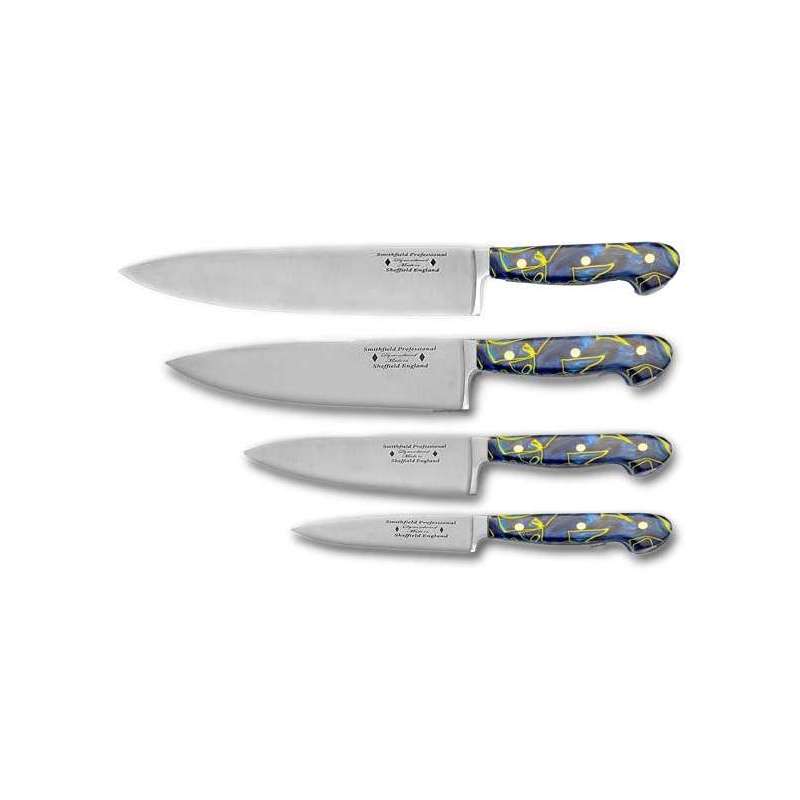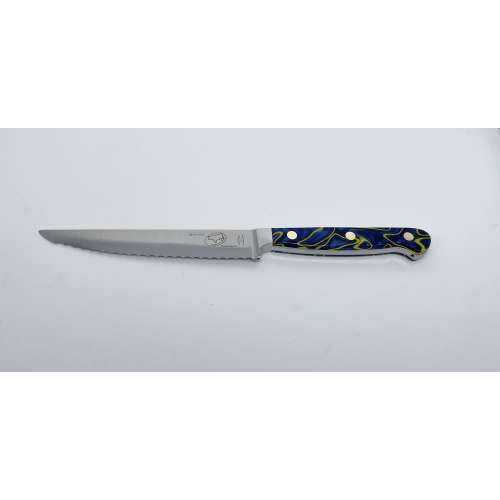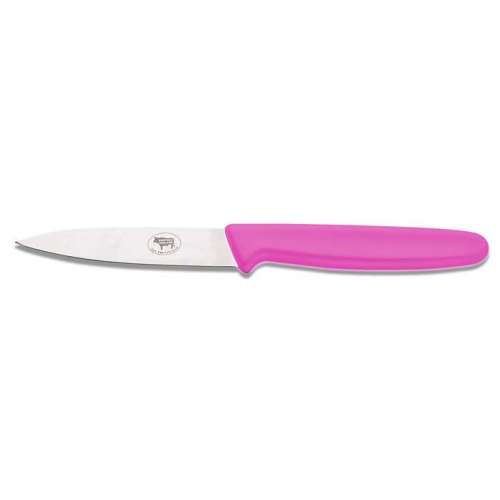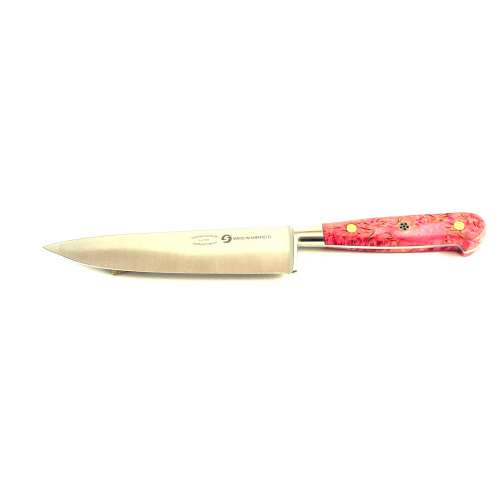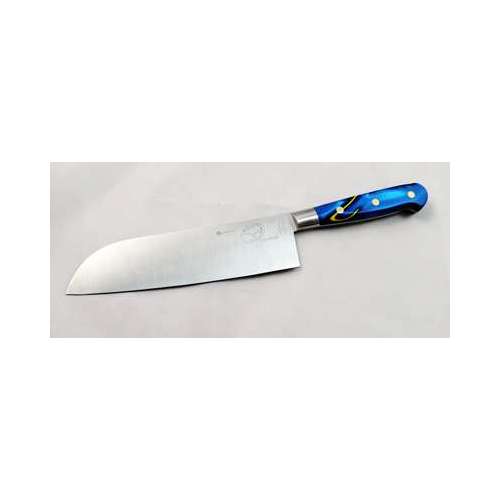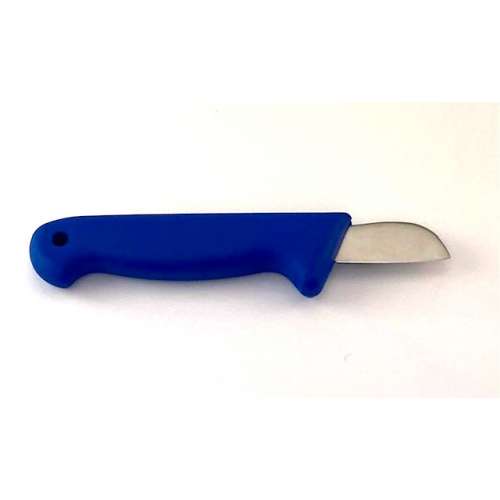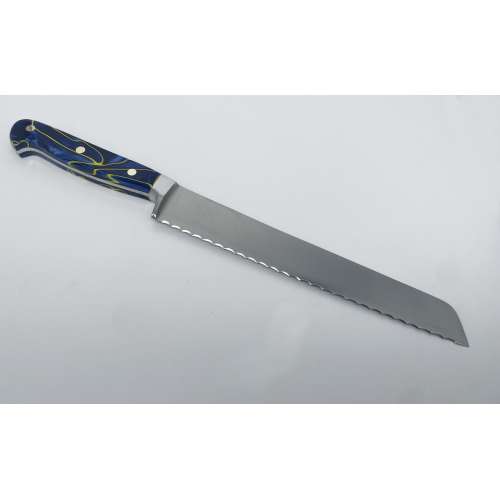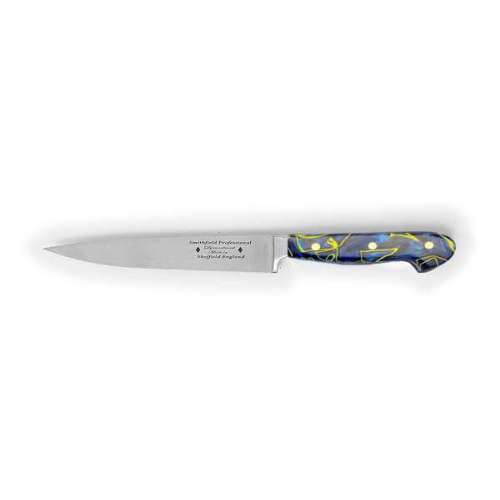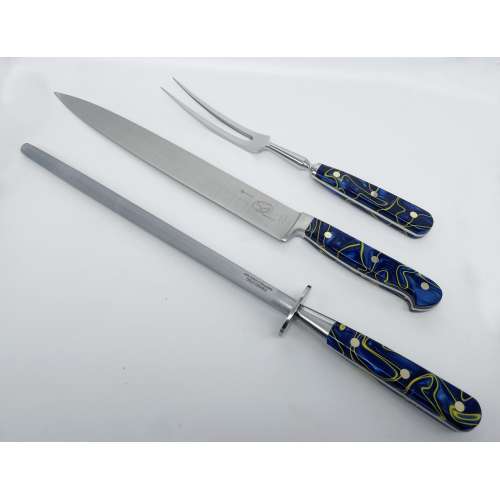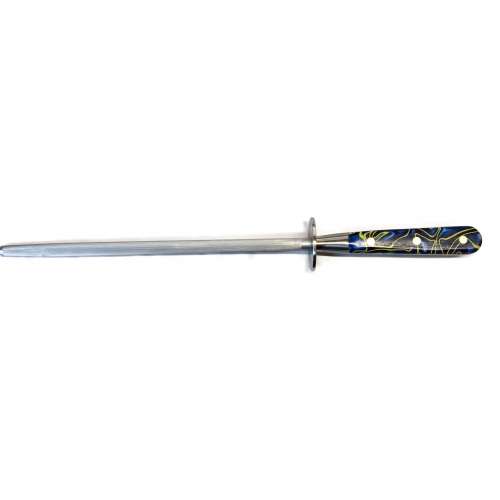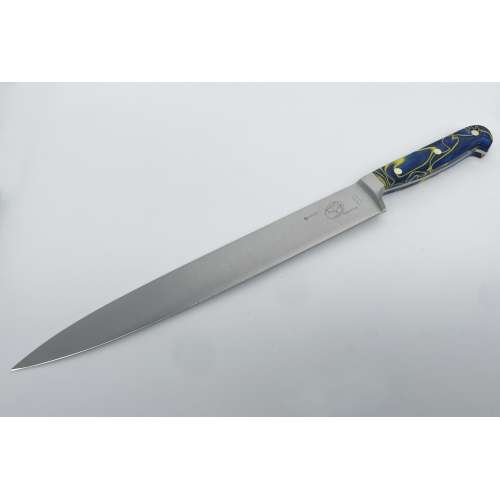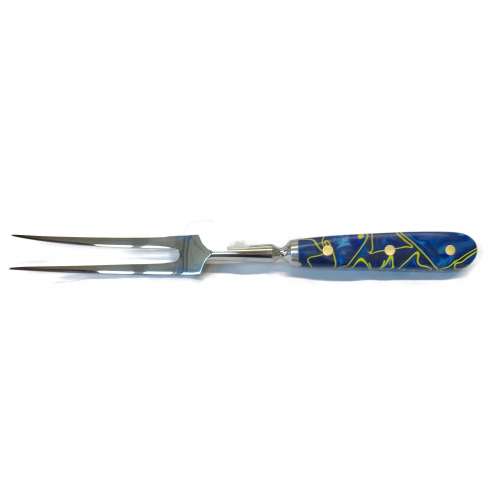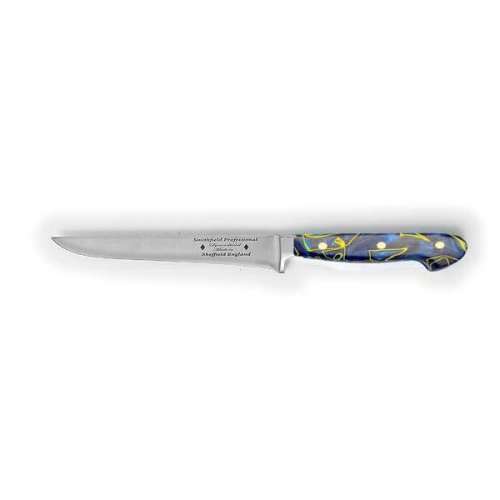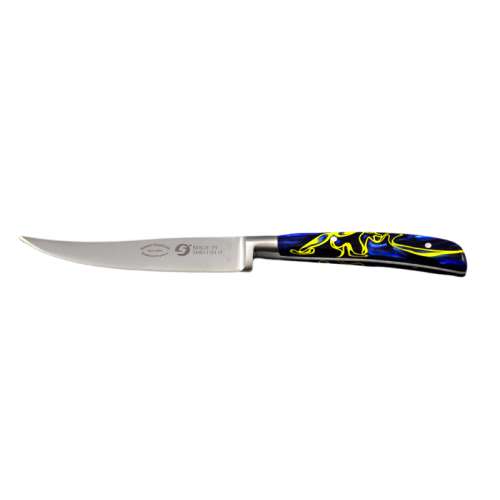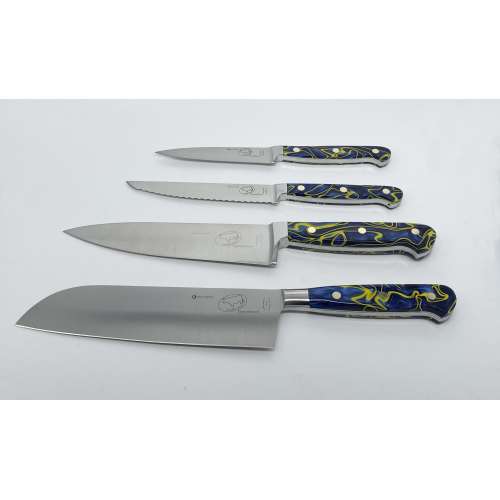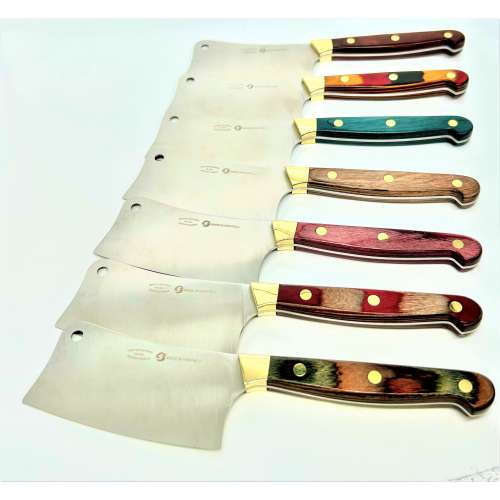No products
Product successfully added to your shopping cart
There are 0 items in your cart. There is 1 item in your cart.
Our chef's knife is fully forged from a single billet of the finest stainless steel, then hand finished to achieve the sharpest cutting edge. The knives themselves are manufactured to meet the demands of the professional chef, in which handling, balance and durability are paramount.
To top it off, as part of our Ocean Blue knife range, this chef’s knife features a beautifully hand-crafted Kirinite ocean blue handle - perfect for customers who are looking for something a little different!
To be called a chef’s knife implies that such a knife is the most important of all the options in the range of knives available. So, why is a chef’s knife such a prominent tool in the kitchen? The answer to this question is quite simple. A chef’s knife is hugely significant in the kitchen because it can be used for absolutely anything, from chopping meat to slicing fruit and vegetables. Chef’s knives typically have a sharp point and a prominent edge that features a sloping curve. The curve facilitates cutting and allows you to execute the knife’s signature rocking motion. The spine is thick to add weight and strength for a greater cutting force. Whilst the shape and length of a chef’s knife can vary, it should always feel like an extension of your body when it is being used.
Chef’s Knife FAQs
What Makes a Chef's Knife Unique?
The distinguishing feature of the chef’s knife is the upward curve towards the tip or point. This shape exists to help you perform the rocking motion with ease. The shape and tip make sure that the knife doesn’t leave the working surface.
How Is a Chef's Knife Used?
As one of the most versatile knives in the kitchen, the chef’s knife can be used for anything from chopping to cutting. Common uses for a chef’s knife include:
Cutting meat
Dicing vegetables
Slicing herbs
Chopping nuts
Crushing garlic (using the flat side of the knife)
The versatility of this multi-purpose knife makes it a must-have in any kitchen.
What Are The Characteristics of The Best Chef’s Knives?
Here are some of our top tips for determining a good chef’s knife:
Material - The best materials are Stainless Steel, Carbon Steel and Ceramic.
Hardness & quality of material - Stainless steel ensures longer sharpness.
Solid & comfortable handle - Improves safety when working hours with your knife.
Balance & comfort - Remember to check for balance and comfort when choosing your chef’s knife. Size and weight should fit the user, as well as the handle, to give full comfort in long working hours with the knife.
Who Invented The Chef’s Knife?
The chef’s knife can be traced back to 1731 when a man named Peter Henkel founded the beginning of what would soon become a knife empire.
What Is The Difference Between a Chef's Knife and a Cooks Knife?
Although a chef’s knife is similar to a cook’s knife, they are not the same. A cook’s knife is a curved knife which is much less robust than a chef’s knife. If you are looking for a smooth cutting experience, it is best to go for a chef’s knife.
How Do You Take Care Of Your Chef’s Knife?
At Samuel Staniforth, our top tips for looking after your chef’s knife include:
Keeping your chef’s knife clean after each use
Washing your chef’s knife with soapy water
Drying your chef’s knife immediately after use
Using the right cutting board (Wooden and plastic chopping boards are best for chef’s knives)
Sharpening and honing your chef knife.
Take a look at our collection of sharpening products to find out more!
| Edge Type | Plain Edge |
| Blade Lengths Available | 4', 6.25', 8.5', 10' |
| Dishwasher Safe | No |
Reviews
No customer reviews for the moment.
Customers who bought this product also bought:
12 other products in the same category:


